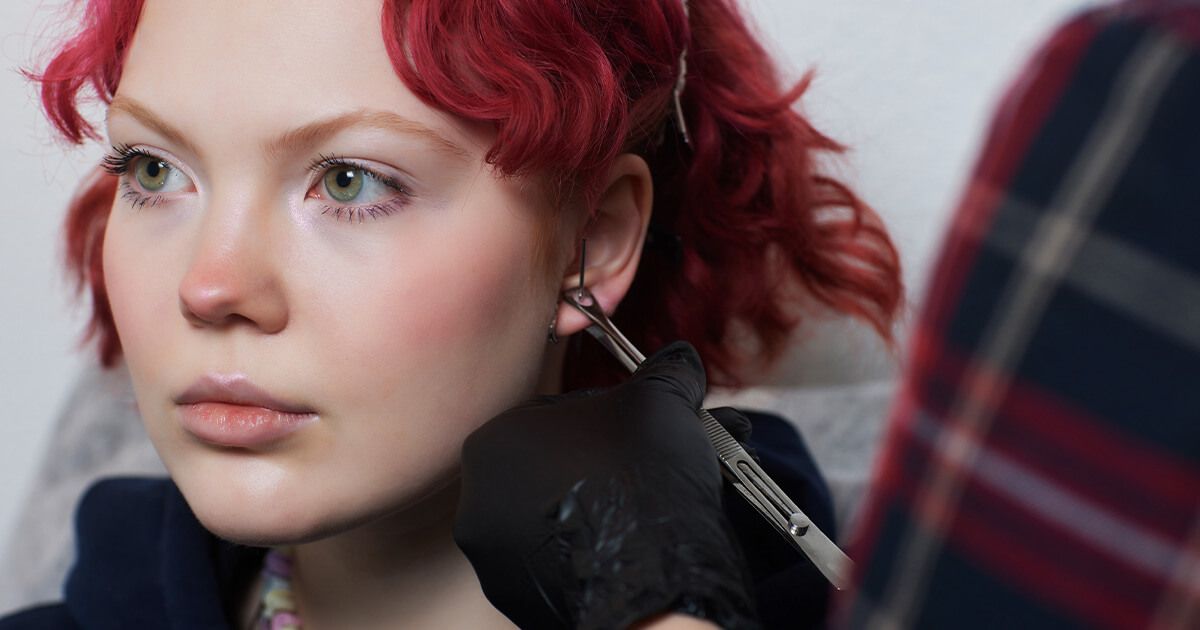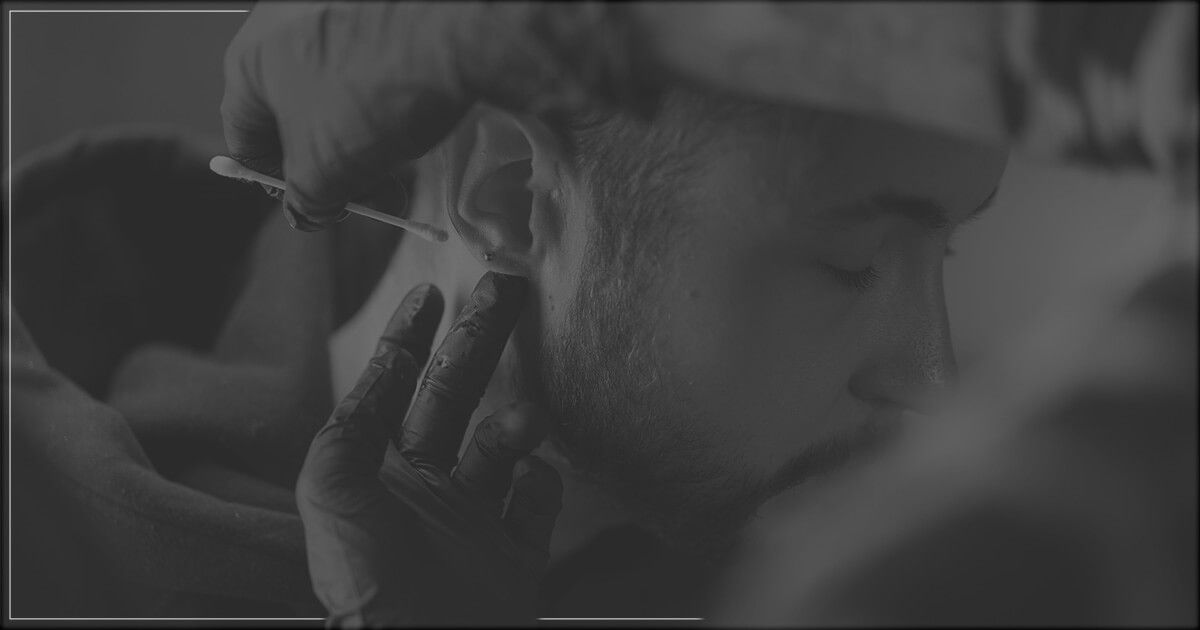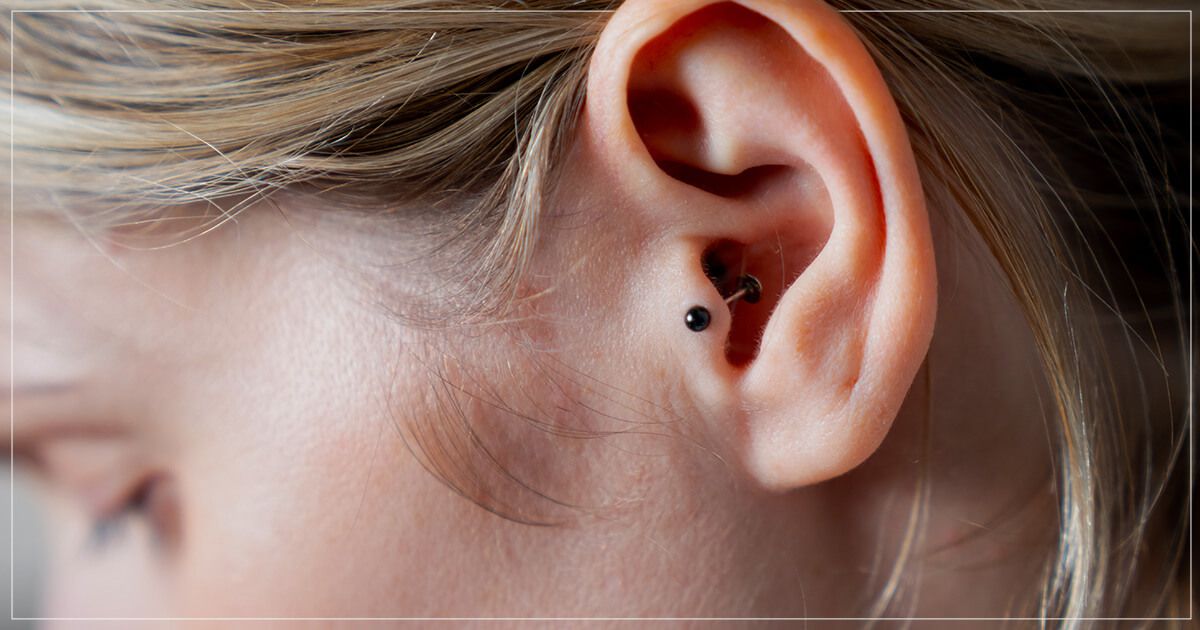
Getting a piercing can be a combination of exciting and nerve-wracking. Every experience is going to be different, but there are some things you can do to prepare before your appointment.
+ READY TO GET STARTED? STEP RIGHT UP AND GET IN TOUCH.
HOW TO SPOT A GOOD TATTOO/PIERCING STUDIO
Since the piercing boom that came in the late 1990s, there has been an explosion of popularity in piercings. There's a lot of high-quality piercing studios popping up these days. Many of them even stock a lot of high-end brands in body piercing jewelry. But that alone doesn't mean a studio is worthwhile, so you need to learn how to tell if a business offers professional piercing services.
You may be asking yourself: where did this rise in popularity come from? Truth be told, it's thanks to the Internet and the online presence of the studios. Now, people have greater access to information and images now more than ever, providing inspiration for a prospective “piercee.”
Generally, most trusted institutions offer piercings in tandem with tattoos. These studios should be clean and professional. However, there are a lot more considerations to keep in mind.
- Cleanliness. As mentioned, when you walk into a studio, you should notice that the walls, ceiling, and floors are all clean and tended to. This is a good indicator that they practice professional and safe procedures.
- Business License. In some cities, like Toronto, a legitimate shop MUST have a special license to do business legally. Double-check to make sure any place you consider is licensed where necessary.
- Sterility. You need to make sure your piercing artist is using an autoclave. If the autoclave isn't out in the open, you can always ask to see it. You can also ask to see the studio's spore test results and make sure that they're using the autoclave regularly to sterilize their piercing tools and needles. You have to make sure your piercing artist is using piercing needles in individual, sterile packaging.
- Portfolio. Always ask to see a piercing artist's portfolio to make sure they have experience with the specific piercing you'd like to get.
THE BIG DAY OF YOUR PIERCING
On the day of your piercing, make sure that you do the following:
- Eat beforehand. Eating before you get your piercing makes sure you won't experience low blood sugar. Low blood sugar can cause dizziness or potential fainting, especially if you struggle with needles or blood.
- Wear comfortable, loose-fitted clothes. Keep in mind where on your body you're getting your piercing, and make sure it won't get irritated by tight-fitted fabric.
- Take a friend with you. A companion can help drive you home if you feel sick or dizzy after your piercing and can also provide moral support.
- Bring photo ID with you. Any proper professional will require you to present a piece of government ID and sign a waiver. You should also be sure to bring any additional required documents the shop may need from you.
Note: If you’re under 16, you must have a parent with you, and both of you need to have valid photo ID. That being said, we do reserve the right to refuse piercings on an individual basis.
THE PIERCING PROCEDURE
Your piercing artist should follow several steps during the procedure and provide you with safe and skilled body piercing services:
- Your piercing artist should mark the site and show it to you before proceeding. This way, you can be sure that the piercing will be exactly where you want it.
- Your piercing artist should change their gloves every time they touch anything that could be a potential contaminant to their gloves.
- All the equipment your piercer uses should be contained in sealed, pre-packaged, sterile wrappers with proper indicators on the bottom and the top to let you know the jewelry and needles are clean and sterile.
- The room should be clean, and your piercer should appear to be in good hygiene. The piercing site should also be cleaned prior to the procedure. If you have any questions or concerns about hygiene, always address them with your piercing artist before they proceed.
POST-PIERCING AFTERCARE
In most professional environments, you'll receive a full breakdown along with a sheet of required aftercare to keep your piercing healthy and avoid infection.
Helpful tips will include keeping your piercing clean with a Recovery Saline Solution or another high-quality sea salt wash required 3-6 times a day.
Your piercing artist should check everything over one last time before you leave to make sure you're feeling OK and make sure you understand the aftercare instructions. Then, you can enjoy a safe and healthy recovery process with your cool new piercing.
WHAT'S NORMAL FOR A NEW PIERCING
Expect the piercing site to be itchy and slightly red on pale skin, or a little darker on those with a deeper complexion. Sometimes, the piercing produces a clear fluid that forms into a crust.
If you've recently gotten an ear or nose piercing, small lumps occasionally form. These lumps, known as granulomas, consist of trapped fluid. They're easily treated by soaking a cotton pad in warm water then holding it against them once a day.
INFECTED PIERCINGS
An infected piercing has the potential to be serious if you don't get it treated quickly. If you think your piercing could be infected, it's best to seek medical aid immediately.
Your piercing might be infected if:
- The area around it is swollen, painful, hot, or very red/dark (this depends on your complexion).
- There's blood or pus leaking from the piercing site. The pus can appear white, green, or even yellow.
- You feel hot, jittery or generally not well. Feeling feverish is also a potential symptom.
- If you experience any of these symptoms, notify the studio where you received the piercing and see your general practitioner.

HOW TO PREVENT NEW PIERCINGS FROM GETTING INFECTED
Make sure you:
- Choose a qualified, experienced piercing artist.
- Clean your piercing as instructed.
- Use a clean paper towel to dry the piercing after cleaning.
- Gargle with an alcohol-free mouthwash for mouth piercings.
Make sure you DO NOT:
- Do not pierce yourself! This is very dangerous and you're far more likely to get an infection. Leave it to the professionals.
- Do not use cotton wool to clean the piercing. Cotton buds, pads, or Q-Tip’s are fine.
- Do not pick at the piercing, including the area or crust surrounding the area.
- Do not twist or turn the jewelry. Generally, try to avoid touching it or putting unneeded contact/pressure on it.
- Do not use a towel to dry the piercing after cleaning.
- Do not go swimming after receiving a piercing.
NEED SOME INSPIRATION?
Now that you know what to look for and have some general guidelines, you may want to take some time to consider what type of piercing you'd like to get. Want some suggestions for stylish body piercing options? We have some suggestions for you to get you started:
Earlobe
Odds are you might already have this, and you're looking for the next piercing that isn't in a typical location. In the event you don’t have one, the earlobe is great for beginners. Not to mention the options for earlobe jewelry are seemingly endless.
Nose
While jumping right into a facial piercing for your first time could seem risky, nostril piercings are straightforward and generally not too painful. You can always keep it subtle if you're not sure. While septum piercings tend to be a bit more painful, they offer a wide range of bold jewelry options.

Tragus
The tragus is a simple but different ear-type piercing that can allow you to treat lightly into the piercing world. Keeping at the ears and lowly visible, the piercing still brings plenty to the table in terms of how unique it is.
Daith
A piercing growing in popularity, the daith is an interesting placement due to the claims that it allegedly helps with migraines. Claims aside, daith piercings are quite trendy. The daith is a nice little unsuspected surprise when people see it on you for the first time.
One last thing: it’s important to think about how a piercing will look on you rather than the images you see online. Not everyone looks the same. You can always ask your artist for suggestions or try our Perfect Fit virtual jewelry try-on tool.
We hope this post helps you make that big decision on when, where, and how you get your next piercing! Reach out to book your piercing session with Perfect Image now.
